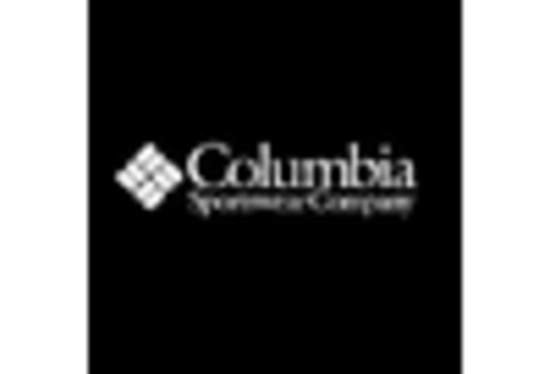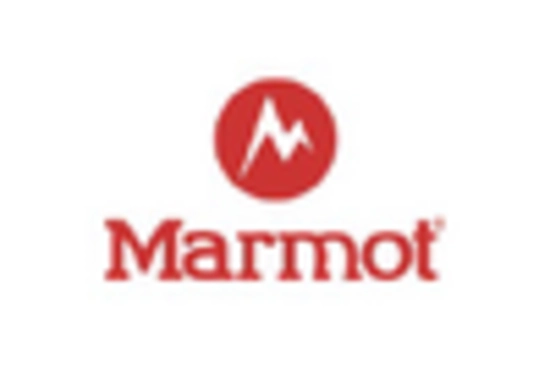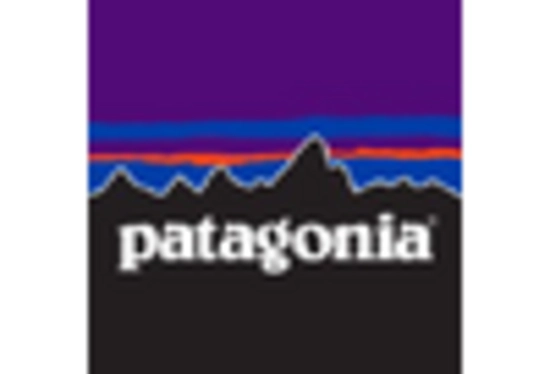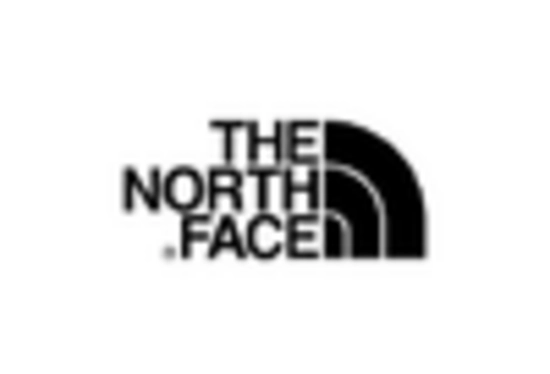The Garment Active Insulation Market is currently characterized by a dynamic competitive landscape, driven by innovation, sustainability, and consumer demand for high-performance outdoor apparel. Key players such as Patagonia (US), The North Face (US), and Arc'teryx (CA) are at the forefront, each adopting distinct strategies to enhance their market positioning. Patagonia (US) emphasizes environmental responsibility, integrating recycled materials into its product lines, while The North Face (US) focuses on technological advancements in insulation materials, aiming to improve thermal efficiency. Arc'teryx (CA) leverages its reputation for high-quality craftsmanship, targeting premium segments of the market. Collectively, these strategies not only foster brand loyalty but also intensify competition, as companies strive to differentiate themselves in a crowded marketplace.
In terms of business tactics, companies are increasingly localizing manufacturing to reduce lead times and enhance supply chain resilience. This approach appears to be a response to the growing demand for quick turnaround times and customization in the active insulation segment. The market structure is moderately fragmented, with several players vying for market share, yet the influence of major brands remains substantial. The collective actions of these key players shape the competitive dynamics, as they engage in strategic partnerships and collaborations to bolster their market presence.
In August 2025, Patagonia (US) announced a partnership with a leading textile manufacturer to develop a new line of insulation made from bio-based materials. This strategic move underscores Patagonia's commitment to sustainability and innovation, potentially setting a new standard in the industry for environmentally friendly insulation solutions. The collaboration is likely to enhance Patagonia's product offerings while appealing to eco-conscious consumers, thereby strengthening its market position.
In September 2025, The North Face (US) launched a new collection featuring its proprietary ThermoBall™ insulation technology, which promises improved warmth and packability. This initiative reflects The North Face's focus on technological innovation, aiming to attract outdoor enthusiasts seeking high-performance gear. By continuously enhancing its product technology, The North Face positions itself as a leader in the active insulation market, likely increasing its competitive edge.
In July 2025, Arc'teryx (CA) expanded its distribution network by entering into a strategic alliance with a prominent e-commerce platform. This move is indicative of the brand's commitment to digital transformation, allowing it to reach a broader audience and enhance customer engagement. The partnership may facilitate a more streamlined purchasing experience, aligning with current consumer trends favoring online shopping.
As of October 2025, the competitive trends in the Garment Active Insulation Market are increasingly defined by digitalization, sustainability, and the integration of advanced technologies such as AI. Strategic alliances are becoming pivotal in shaping the landscape, enabling companies to leverage shared resources and expertise. Looking ahead, competitive differentiation is likely to evolve, with a pronounced shift from price-based competition to a focus on innovation, technological advancements, and supply chain reliability. This transition may redefine market dynamics, compelling companies to continuously adapt and innovate to maintain their competitive edge.


















Leave a Comment